This website uses cookies so that we can provide you with the best user experience possible. Cookie information is stored in your browser and performs functions such as recognising you when you return to our website and helping our team to understand which sections of the website you find most interesting and useful.
Home Care In East Berlin, CT

They say that your golden years are the best years of your life. For most older Americans, that's how it should be - a time to relax, reflect, and live life in a familiar place. After all, senior citizens in the U.S. have worked tirelessly to build a better economy, serve their communities, and raise families.
However, as seniors grow older, completing daily tasks like showering and enjoying activities such as visiting the historic Berlin Historical Society gets harder without someone by their side. Unfortunately, many older Americans aren't able to rely on their adult children for help. The reality in today's world is that family members do not have the skills or time to dedicate to caring for their parents. That's where Always Best Care Senior Services comes in.
Our in-home care services are for people who prefer to stay at home as they grow older but need ongoing care that family or friends cannot provide. More and more older adults prefer to live far away from long-term, institutionalized facilities and closer to the place where they feel most comfortable - their home. Home care in East Berlin, CT is a safe, effective way to give your loved ones the care they need when they need it the most.

 Home Care Services
Home Care Services
- Home Care in East Berlin, CT
- The Always Best Care Difference
- Types of In-home Care in East Berlin, CT
- Benefits of Home Care in East Berlin, CT
- Aging in Place: The Preferred Choice for Most Seniors
- Affordable Care Plans
- Compassionate Care. Trusted Caregivers
- Assisted Living Referral Services
- Taking the First Step with Always Best Care
 Service Areas
Service Areas
The Always Best Care Difference
Since 1996, Always Best Care has provided non-medical in-home care for seniors to help them maintain a healthy lifestyle as they get older. We are proud to have helped more than 25,000 seniors maintain higher levels of dignity and respect. We focus on providing seniors with the highest level of in-home care available so that they may live happily and independently.
Unlike some senior care companies, we genuinely want to be included in our clients' lives. We believe that personalized care is always the better option over a "one size fits all" approach. To make sure our senior clients receive the best care possible, we pair them with compassionate caregivers who understand their unique needs. That way, they may provide care accordingly without compromising their wellbeing.
The Always Best Care difference lies in life's little moments - where compassionate care and trustworthy experience come together to help seniors live a fruitful, healthy life. Whether you are an aging adult that can't quite keep up with life's daily tasks or the child of a senior who needs regular in-home services, Always Best Care is here to help.
“Where can I begin? The short review: ABC Caregivers are FABULOUS!! The long review: We landed in”
“Thank you for being such a great leader. The way you lead our team is”
“I am writing to express our deepest gratitude for the extraordinary care provided to my”
“I’m very happy to have found ABC Care! The caregivers are very professional and”
“I have been working with this company for 3 and a half years. My employers”
“High quality, reliable service. Caregivers are selected carefully, are well trained, and office support is”
“I highly recommend Always Best Care. This company is professional and caring. Porsha, Sunny and”
“The level of dedication Crystal has to her work is amazing!! I cannot say how”
“Staff is great there a great place to work and call your workplace”
“Always Best Care of Central CT is helping me with my mom who is 92”
“I’ve been a nurse for over 40 years, and I am currently a nursing professor.”
“Mom’s care needs have been progressing over the past month - increased difficulty standing. walking,”
“Outstanding personal service from this company. All of the caregivers were personable and provided outstanding”
“Taylor, John, and Kristine and their crew are the best. They are patient, understanding, and”
“You can't go wrong with this crew. Extremely patient and caring.”
“Caring for family can be difficult and challenging at times. It's so nice to know”
“Sabina always has a pleasant, caring, and respectful attitude. I feel she treats me as”
“Diana has a total commitment of compassion, empathy, and respect for myself and my family.”
“Tina has been with us since the start, caring for my mom. Tina has nothing”
“Always Best Care helped our family get through a very difficult time with my mother's”
“I approached Kristine regarding care for my elderly father. Even though he was outside”
“I have known Kristine Lajeunesse for many years now through business networking and she and”
“The client care at Always Best Care Senior Service is outstanding”
“We needed some home care services for Dad who has dementia, and we made the”
“Kristine and John are extremely caring and compassionate about helping their client's and family and”
“Rosemary has many great qualities. She is a hardworker, sensitive, has a giving nature and”
“Always Best Care provides caregivers to our building on a regular basis when we are”
“I have known John and Kristine Lajeunesse for almost 20 years and when my dad”
“Always Best Care helped me to get care lined up for my uncle, after I”
“My dad’s caregiver is great. He is a man of few words, but she is”
“Thank you, Kristine - I am very appreciative of the professional manner with which you”
“I wanted to take a moment to thank you and your staff for all of”
“I am very pleased with the care that Craig gave to my husband. My husband”
“I hired Always Best Care to help my mom who was living with me at”
“My husband had care from Always Best Care until he passed away. Thankfully he is”
“My family provides the care to my mother 24/7, we called Always Best Care to”
“The caregiver that helped my husband and I were so kind to us both, especially”
“i really like my caregiver, Victor very much. Victor is a very patient and observant”
“Where can I begin? The short review: ABC Caregivers are FABULOUS!! The long review: We landed in a gap of care for my mom. I called Taylor at ABC on a Thursday and early the next week we had completed the intake process, and Taylor was able to secure 3 caregivers (12 hrs a day for 7 days a week) for my mom. The caregivers (Teresa Rose, Asha, Doreen) were great. Each had their own approach with mom, regardless, they all had empathy, compassion and kindness any time they engaged with mom. The support from ABC give us the time to find a new community that better fit where mom was with her Alzheimer's journey. We are so very grateful for the quick support, the follow up and the care needed in a critical time for us and for mom. THANK YOU ALWAYS BEST CARE!!! You are amazing!!!!”
“Thank you for being such a great leader. The way you lead our team is admirable, and you are constantly inspired to do great work. I know that under your leadership, not only do you care about the (clients,)but you also care about (us)the caregivers …We will continue to grow. Thank you for your time Have a great and prosperous week. Elsa”
“I am writing to express our deepest gratitude for the extraordinary care provided to my mother, Gerry Mikulka, during her final weeks of life. In particular, I want to recognize Evelyn, whose exceptional service as a live-in health aide made an immeasurable difference in my mother's end-of-life journey. From the moment Evelyn walked into the house, she created a special bond with our mom. In those first few weeks, Evelyn recognized Mom's need for companionship, spending time with her watching television and working on puzzles together. It warmed our hearts to see Mom so comfortable with someone in the home since she had lived there alone for many years. As Mom's condition progressed, Evelyn's true expertise shined through. She worked beautifully with our family and the hospice nurses, providing invaluable guidance on necessary medical equipment, dietary adjustments, and other modifications to ensure mom's comfort. What touched us most was how Evelyn went above and beyond in Mom's final days. She moved into Mom's room to be there whenever she was needed – day or night. And she had a wonderful way of being there for us too. Whenever we were visiting with Mom, Evelyn would quietly step back, but she was always just around the corner if we needed help. She knew exactly when to step in and when to give us privacy. We never felt alone in caring for Mom because Evelyn was such a steady, caring presence. She managed Mom's pain with real skill while keeping her comfortable and peaceful. I wanted you to know what an extraordinary person you have in Evelyn. We'll always be grateful for the peace of mind she gave us and the tender care she gave Mom. Warmly, Linda Knox”
“I’m very happy to have found ABC Care! The caregivers are very professional and kind. My past experiences have been exacerbating to say the least. ABC is the fifth agency I’ve chosen and it’s the last! ABC has what I was looking for. Compassionate, and loving caregivers with my mom. With Always Best Care my mother is treated very well. She’s a person not just another client.”
“I have been working with this company for 3 and a half years. My employers along with the office staff are very caring. They do their due diligence in pairing caregivers with clients, they show their appreciation to us for the work we do, they provide us with training so that we are equipped to succeed at our jobs. Working with this company has been an awesome and fulfilling experience.”
“High quality, reliable service. Caregivers are selected carefully, are well trained, and office support is excellent.”
“I highly recommend Always Best Care. This company is professional and caring. Porsha, Sunny and Nicola gave my mother the best care. They cared about my mom. My mother trusted them, as did I. Their excellent care of my mom put my mind at ease. When I needed additional care, it was put in place immediately. I never had to worry about someone not showing up. I appreciate the care Always Best Care gave to my mom.”
“The level of dedication Crystal has to her work is amazing!! I cannot say how impressive the effort and the results Crystal has displayed over the last several months, how lucky I feel to have her apart of my mother’s weekly life. Crystal has established trust, friendship, and a sincere companionship with my mother who, not so long ago, was so adamantly opposed to having anyone in her house. When speaking with Crystal and my mother, I could hear the excitement in Crystal’s voice when she shared her success in getting my Mom out of the house. Can’t thank you enough!!”
“Staff is great there a great place to work and call your workplace”
“Always Best Care of Central CT is helping me with my mom who is 92 and still living on her own. The in-home care they are providing is the best. Without the assistance they are providing us in Enfield this would be overwhelming.”
“I’ve been a nurse for over 40 years, and I am currently a nursing professor. When my mom was recently in the hospital, I knew it would not be possible for her to be completely on her own right away. She loves where she resides and enjoys all of the activities that are offered. My goal was to get her back into her apartment as soon as possible with the support she needed to increase her strength and return to her prior level of wellness she had before she went into the hospital. She was used to walking a couple miles a day. When I reached out to ABC I made it clear that my mom would need somebody who would be willing to walk with her in the morning, and in the evening enabling her to get back to her baseline. I would like to complement all of the staff at ABC who provided my mom such wonderful support after two weeks she returned to her baseline and remained in her apartment. She really enjoyed all of the staff that were with her , they were professional they encouraged her to walk, drink fluids, eat and were instrumental in assisting her to reach her prior level of independence. I would strongly recommend ABC to anybody who is in need of support for their loved one.”
“Mom’s care needs have been progressing over the past month - increased difficulty standing. walking, decreased appetite, increased incontinence. (Part of the expected declining process per her Dr.) Tara has been wonderful in adapting to Mom’s changing needs as they develop and a very helpful partner in troubleshooting. brainstorming how to adapt to best support Mom. It’s also been helpful in my regular communication with Mom’s Dr, to let her know in detail what has come up and how we have approached. Thank you (again) for your talented staff!”
“Outstanding personal service from this company. All of the caregivers were personable and provided outstanding care to our aunt. I would highly recommend them to anyone who has an elder family member in need. Also, the staff that helped to set up their services was outstanding as well. They made the decisions easy to understand with no hidden agenda. Thank you again to "ABC!"”
“Taylor, John, and Kristine and their crew are the best. They are patient, understanding, and a joy to work with.”
“You can't go wrong with this crew. Extremely patient and caring.”
“Caring for family can be difficult and challenging at times. It's so nice to know that Always Best Care Senior Services is there to help!”
“Sabina always has a pleasant, caring, and respectful attitude. I feel she treats me as she would as her own mother. She treats me the way she would like to be treated. We are a good “team” together.”
“Diana has a total commitment of compassion, empathy, and respect for myself and my family. My daughters feel she is truly a tremendous caregiver. They know I am in good hands. She acknowledges with commitment of my physical, emotional, and practical needs, my quality of life has excelled due to Diana’s help. I look forward to her presence everyday her attitude is exceptional, Diana comes to work daily with a smile on her face. She enters the front door, singing softly ready to work. She has never taken a day off, I have had many caregivers, but Diana is truly the best!”
“Tina has been with us since the start, caring for my mom. Tina has nothing but my mom’s best interest at heart. She continues to go above and beyond to care for my mom, and ensure anyone else who may be there also understands my mom’s needs. Tina has even gone so far to rearrange her schedule or give up her free time to stay with my mom to avoid her having someone that doesn’t know her. I can see that she genuinely cares for my mom, and treats her as if she was her own family member. That also goes both ways, my mom lights up when she sees Tina. We consider Tina part of our family.”
“Always Best Care helped our family get through a very difficult time with my mother's care. Kristine and Taylor are a pleasure to work with. They are very knowledgable and had the answers to all our questions. They were able to help with all aspects of the care we needed. I highly recommend them.”
“I approached Kristine regarding care for my elderly father. Even though he was outside her service area, she helped to find resources for us. Her commitment to providing outstanding care is only surpassed by her desire to help others. Thank you Kristine!”
“I have known Kristine Lajeunesse for many years now through business networking and she and her Team at Always Best Care are very caring and professional and exactly who you would want on your side if you have a loved one who needs help!”
“The client care at Always Best Care Senior Service is outstanding”
“We needed some home care services for Dad who has dementia, and we made the right decision to trust ABC Senior Services for this support. Dad was lined up with a caregiver who was attentive and helpful, and she and Dad really hit it off. The management and administrative staff from ABC were also very effective and professional. You'll make a good decision to go with ABC Senior Services...”
“Kristine and John are extremely caring and compassionate about helping their client's and family and making sure they receive the best care available. Highly recommended!”
“Rosemary has many great qualities. She is a hardworker, sensitive, has a giving nature and has an immense desire to help my father. Reliability is vital trait in Rosemary. When my father was in the hospital and came home she immediately wanted to be by his side. My father has come to rely and depend on Rosemary. She is always on time whether it is giving medication or administering food and often encourages my father and helps my father maintain his dignity”
“Always Best Care provides caregivers to our building on a regular basis when we are short staffed. Due to our licensing, we can only have CNAs on the floor and Always Best Care has provided excellent CNAs every time we need some extra help. All of their CNAs have been helpful, willing to go above and beyond for our residents and we always have great responses from our own CNAs and supervisory staff. I am so thankful to Michelle and Wilda who will always staff a shift that I need, even if I call 30 minutes before the shift starts. You’ve been such a huge help!”
“I have known John and Kristine Lajeunesse for almost 20 years and when my dad needed care following a diagnosis of dementia, I knew there wouldn’t be anyone better to call than them. The caregivers that have worked with my dad have been wonderful. They are true saints to my family, allowing us the knowledge that Dad is okay to stay at home. They have navigated all of the changes in his cognitive state with grace and kept my father’s dignity in place. He was always a very active man and the caregivers have managed to keep him active, even as his health declines.”
“Always Best Care helped me to get care lined up for my uncle, after I received their information from a close friend of mine that also used their agency. My uncle was a very proud man and did not want help from anyone, including family. Taylor met with me and spent time getting to know the ins and outs of my uncle’s care as well as his personality. She asked about his background so that they could look for a caregiver with similar interests. Although he took a turn for the worse rather quickly, the short time care was provided was wonderful. Thank you for your help and compassion.”
“My dad’s caregiver is great. He is a man of few words, but she is able to get him talking about all aspects and experiences of his life. They go out regularly and she encourages my dad to participate in the activities put on by the community he lives in. They run errands, go out for meals, or go for a drive just to get a change of scenery. I was nervous at first about how my dad would take having a caregiver come in to help him, but he seems so happy and has great things to talk about after his time spent with his caregiver.”
“Thank you, Kristine - I am very appreciative of the professional manner with which you and your organization operates. From the initial phone and in-person conversations with Taylor, to the ongoing support of my mother's care - it's been thorough, timely and well managed. I am also struck by how the home-health employees conduct themselves. They are reliable/responsive *and* responsible, and making every effort to work through the challenges day to day with my mother. Thanks for the great job you and your organization are doing. It means a lot to me, especially during this trying time! Best Regards”
“I wanted to take a moment to thank you and your staff for all of your hard work and dedication to their clients. When my parents finally realized they needed help in their home, I chose ABC as the company I felt would be the best fit. Yes, we have had some ups and down, but when you paired Leah with my parents, it was truly a blessing. My parents love her. She genuinely cares for them and they speak highly of her work ethic. As my mom says, “she is too good to be true”. I just wanted to let you know how much I appreciate your working with me to find the right fit. Well on our end, Leah fits like a glove and I hope she feels the same. She is a special person so I wanted to acknowledge her hard work and dedication to my parents. It makes me feel more at ease knowing there is someone coming to the home to properly care for them. Again I want to thank you all and encourage you to keep up the good work.”
“I am very pleased with the care that Craig gave to my husband. My husband enjoyed having another man to talk to instead of conversation only between him and I. Craig managed to keep him occupied and safe so that I could go and get some time to myself, allowing me peace of mind that my husband was in great hands”
“I hired Always Best Care to help my mom who was living with me at home. She was diagnosed with dementia and within 3 months she could hardly do much for herself anymore. I was able to continue working full time while my mom received care from Always Best Care. We had the same caregiver from day 1 and she was absolutely amazing. She kept everyone in the loop with any changes my mom experienced and the regular in person and phone check ins were a great added support to myself and my family. Thank you ABC for all the help and compassion that you showed my mom until her passing.”
“My husband had care from Always Best Care until he passed away. Thankfully he is on his "next journey" and finally pain free, while he was here with us, his caregiver, Craig, did an amazing job caring for him and was here to help us from our first day of services. Craig always managed to get my husband to share stories from his time in the war that even I had not heard before. It was a great way to get to know more of my husband so his memory can continue with others around him.”
“My family provides the care to my mother 24/7, we called Always Best Care to provide respite care to my mom while we took some time to ourselves for a weekend. Mom’s caregiver, Gloria, was great and she had the perfect disposition to work with my mom. She was attentive and kept mom well fed and engaged during the time we were away. We would definitely call Always Best Care again when we need some time away.”
“The caregiver that helped my husband and I were so kind to us both, especially to my husband while I spent some time in the hospital and rehab. Our caregiver brought my husband to see me every day while I was at the hospital and at rehab, I knew he was in excellent hands and I could focus on getting stronger again.”
“i really like my caregiver, Victor very much. Victor is a very patient and observant aide who knows when I need his help. I knew from the first day meeting him that we would get along very well.”
What is Non-Medical Senior Care in East Berlin, CT?

Home is where the heart is. While that saying can sound a tad cliche, it is especially true for many seniors living in America. When given a choice, older adults most often prefer to grow older at home. An AARP study found that three out of four adults over the age of 50 want to stay in their homes and communities as they age.

When you begin to think about why, it makes sense. Home offers a sense of security, comfort, and familiarity.

The truth is, as we age, we begin to rely on others for help. When a family is too busy or lives too far away to fulfill this role, in-home senior care is often the best solution. Home care services allow seniors to enjoy personal independence while also receiving trustworthy assistance from a trained caregiver.

At Always Best Care, we offer a comprehensive range of home care services to help seniors stay healthy while they get the help they need to remain independent. As your senior loved one gets older, giving them the gift of senior care is one of the best ways to show your love, even if you live far away.

Types of Elderly Care in East Berlin, CT
To give our senior clients the best care possible, we offer a full spectrum of in-home care services:

Personal Care Services
If your senior loved one has specific care needs, our personal care services are a great choice to consider. Personal care includes the standard caregiving duties associated with companion care and includes help with tasks such as dressing and grooming. Personal care can also help individuals with chronic conditions like diabetes.
Common personal care services include assistance with:
- Eating
- Mobility Issues
- Incontinence
- Bathing
- Dressing
- Grooming


Home Helper Services
Sometimes, seniors need helpful reminders to maintain a high quality of life at home. If you or your senior has trouble with everyday tasks like cooking, our home helper services will be very beneficial.
Common home helper care services include assistance with:
- Medication Reminders
- Meal Preparation
- Pet Care
- Prescription Refills
- Morning Wake-Up
- Walking
- Reading


Companionship Services
Using this kind of care is a fantastic way to make life easier for you or your senior loved one. At Always Best Care, our talented caregivers often fill the role of a companion for seniors. That way, older adults can enjoy their favorite local activities, such as visiting Timberlin Park with friends while also receiving the care they need daily or weekly.
Common companionship services include:
- Grocery Shopping
- Transportation to Appointments
- Nutritional Assistance
- Conversation
- Planning Outings
- Completing Errands
- Transportation to Community
- Events and Social Outings


Respite Care Services
According to AARP, more than 53 million adults living in the U.S. provide care to someone over 50 years old. Unfortunately, these caregivers experience stress, exhaustion, and even depression. Our respite care services help family caregivers address urgent obligations, spend time with their children, and enjoy nearby activities. Perhaps more importantly, respite care gives family members time to recharge and regroup. Taking personal time to de-stress reduces the risk of caregiver burnout. So, if you've always wanted to eat at the local Uncle D's Diner or visit Section of Berlin Wall, don't feel bad. Doing so is great for both you and your loved one.
At the end of the day, our goal is to become a valuable part of your senior's daily routine. That way, we may help give them the highest quality of life possible. We know that staying at home is important for your loved one, and we are here to help make sure that is possible.
If you have been on the fence about non-medical home care, there has never been a better time than now to give your senior the care, assistance, and companionship they deserve.

Benefits of Home Care in East Berlin, CT
Always Best Care in-home services are for older adults who prefer to stay at home but need ongoing care that friends and family cannot provide. In-home care is a safe, effective way for seniors to age gracefully in a familiar place and live independent, non-institutionalized lives. The benefits of non-medical home care are numerous. Here are just a few reasons to consider senior care services from Always Best Care:
Always Best Care offers a full array of care options for patients at all levels of health. With our trusted elderly care services, your loved one will receive the level of care necessary for them to enjoy the highest possible quality of life.
Request More Information
Aging in Place: The Preferred Choice for Most Seniors
While it's true that some seniors have complicated medical needs that prevent them from staying at home, aging in place is often the best arrangement for seniors and their families. With a trusted caregiver, seniors have the opportunity to live with a sense of dignity and do so as they see fit - something that is unavailable to many older people today.
In-home care makes it possible for millions of seniors to age in place every year. Rather than moving to a strange nursing home, seniors have the chance to stay at home where they feel the happiest and most comfortable.
Here are just a few of the reasons why older men and women prefer to age at home:
How much does a senior's home truly mean to them?
A study published by the American Society on Aging found that more than half of seniors say their home's emotional value means more than how much their home is worth in monetary value. It stands to reason, then, that a senior's home is where they want to grow old.
With the help of elderly care in East Berlin, CT, seniors don't have to age in a sterilized care facility. Instead, they can age gracefully in the place they want to be most: their home. In contrast, seniors who move to a long-term care facility must adapt to new environments, new people, and new systems that the facility implements. At this stage in life, this kind of drastic change can be more harmful than helpful.
Institutional care facilities like nursing homes often put large groups of people together to live in one location. On any given day, dozens of staff members and caregivers run in and out of these facilities. Being around so many new people in a relatively small living environment can be dangerous for a seniors' health and wellbeing. When you consider that thousands of seniors passed away in nursing homes during the COVID-19 pandemic, opting for in-home care is often a safer, healthier choice for seniors.
Aging in place has been shown to improve seniors' quality of life, which helps boost physical health and also helps insulate them from viral and bacterial risks found in elderly living facilities.
For many seniors, the ability to live independently with assistance from a caregiver is a priceless option. With in-home care, seniors experience a higher level of independence and freedom - much more so than in other settings like a nursing home. When a senior has the chance to age in place, they get to live life on their own terms, inside the house that they helped make into a home. More independence means more control over their personal lives, too, which leads to increased levels of fulfillment, happiness, and personal gratification. Over time, these positive feelings can manifest into a healthier, longer life.
More independence, a healthier life, and increased comfort are only a few benefits of aging in place. You have to take into consideration the role of cost and convenience. Simply put, it's usually easier and more affordable to help seniors age in place than it is to move them into an institutional care facility. According to the US Department of Housing and Urban Development, seniors who age in the comfort of their homes can save thousands of dollars per month.
In-home care services from Always Best Care, for instance, are often less expensive than long-term solutions, which can cost upwards of six figures per year. To make matters worse, many residential care facilities are reluctant to accept long-term care insurance and other types of payment assistance.
With Always Best Care's home care services, seniors and their families have a greater level of control over their care plans. In-home care gives seniors the chance to form a bond with a trusted caregiver and also receive unmatched care that is catered to their needs. In long-term care facilities, seniors and their loved ones have much less control over their care plan and have less of a say in who provides their care.

Affordable Care
In-home care is a valuable resource that empowers seniors to age in place on their own terms. However, a big concern for many families and their loved ones is how much in-home care costs. If you're worried that in-home care is too expensive, you may be pleasantly surprised to learn that it is one of the most affordable senior care arrangements available.
Typically, hiring an Always Best Care in-home caregiver for a few hours a week is more affordable than sending your loved one to a long-term care facility. This is true even for seniors with more complex care needs.
At Always Best Care, we will work closely with you and your family to develop a Care Plan that not only meets your care needs, but your budget requirements, too. Once we discover the level of care that you or your senior need, we develop an in-home care plan that you can afford.
In addition to our flexible care options, families should also consider the following resources to help offset potential home care costs:

Compassionate Care. Trusted Caregivers.
When you or your senior loved one needs assistance managing daily tasks at home, finding a qualified caregiver can be challenging. It takes a special kind of person to provide reliable care for your senior loved one. However, a caregiver's role involves more than meal preparation and medication reminders. Many seniors rely on their caregivers for companionship, too.
Our companion care services give seniors the chance to socialize in a safe environment and engage in activities at home. These important efforts boost morale and provide much-needed relief from repetitive daily routines. A one-on-one, engaging conversation can sharpen seniors' minds and give them something in which to be excited.
At Always Best Care, we only hire care providers that we would trust to care for our own loved ones. Our senior caregivers in East Berlin, CT understand how important it is to listen and communicate with their seniors. A seemingly small interaction, like a short hug goodbye, can make a major difference in a senior's day. Instead of battling against feelings of isolation, seniors begin to look forward to seeing their caregiver each week.
Understanding the nuances of senior care is just one of the reasons why our care providers are so great at their job.
Unlike some senior care companies, our caregivers must undergo extensive training before they work for Always Best Care. In addition, our caregivers receive ongoing training throughout the year. This training ensures that their standard of care matches up to the high standards we've come to expect. During this training, they will brush up on their communication skills, safety awareness, and symptom spotting. That way, your loved one receives the highest level of non-medical home care from day one.
Assisted Living Referral Services
While it's true that many seniors prefer to age at home, sometimes in-home care isn't the best fit. For those seniors and their families, choosing an assisted living facility makes more sense. Unfortunately, finding the optimal care facility is easier said than done in today's day and age. That's when Always Best Care's assisted living referral services begin to make a lot of sense.
Assisted living is a form of housing intended for seniors who require varying degrees of medical and personal attention. Accommodations may include single rooms, apartments, or shared living arrangements. Assisted living communities are typically designed to resemble a home-like environment and are physically constructed to encourage the independence of residents.

At assisted living communities, seniors receive help with daily activities such as bathing, dressing, and eating. They may also benefit from coordination of services with outside healthcare providers, and monitoring of resident activities to ensure their health, safety, and well-being. Caregivers who work at assisted living communities can also provide medication administration and personal care services for older adults.
Other services offered within assisted living communities can include some or all of the following:
- Housekeeping
- Laundry
- Recreational Activities
- Social Outings
- Emergency Medical Response
- Medication Monitoring
- Family Visitation
- Personal Care

At Always Best Care, our representatives can match your senior's emotional, physical, and financial needs with viable assisted living communities nearby. Results are based on comparative data, so you can select the best choice for you or your loved one.
Always Best Care works closely with local senior living communities to gain valuable knowledge that we then use to help seniors and their loved ones make informed decisions. This information can include basic care and rent, resident availability, and services provided. Because Always Best Care is compensated by these communities, we provide senior living referral services at no extra cost to you.
Some of the most popular assisted living communities to consider in our area include the following:
- Worthington Manor
- Ledgecrest Health Care Center
- Berlin VNA
- Leadingage Connecticut
- The Residence at Ferry Park
- Spring Oak at Berlin

For many seniors, moving into a senior living community revolves around how and when they want to make a transition to more involved care. Some seniors are more proactive about transitioning to independent living. Others choose to remain home until their care needs or other requirements are satisfied. Remember - our staff is here to help. Contact our office today to learn more about assisted living communities and how we can find a facility that exceeds your expectations.

Taking the First Step with Always Best Care
The first step in getting quality in-home care starts with a personal consultation with an experienced Always Best Care Care Coordinator. This initial consultation is crucial for our team to learn more about you or your elderly loved one to discover the level of care required. Topics of this consultation typically include:
A discussion of your needs and how our trained caregivers can offer assistance in the most effective way

A draft of your care plan, which includes highly detailed notes and a framework for the care that you or your senior will receive

Discuss payment options and help coordinate billing with your insurance provider

Our caregivers are trained to spot changes that clients exhibit, like mental and physical decline. As your trusted senior care company, we will constantly assess and update your Care Plan to meet any new emotional, intellectual, physical, and emotional needs.
If you have never considered in-home care before, we understand that you and your family may have concerns about your Care Plan and its Care Coordinator. To help give you peace of mind, know that every team member and caregiver must undergo comprehensive training before being assigned to a Care Plan.
At the end of the day, we only hire the best of the best at Always Best Care. Whether you need home care in East Berlin, CT 24-hours a day or only need a respite for a couple of hours, we are here to serve you.
When you're ready, we encourage you to contact your local Always Best Care representative to set up a Care Consultation. Our Care Coordinators would be happy to meet with you in person to get to know you better, discuss your needs, and help put together a personalized Care Plan specific to your needs.

Latest News in East Berlin, CT
Disclaimer:


 860.777.1027
860.777.1027





